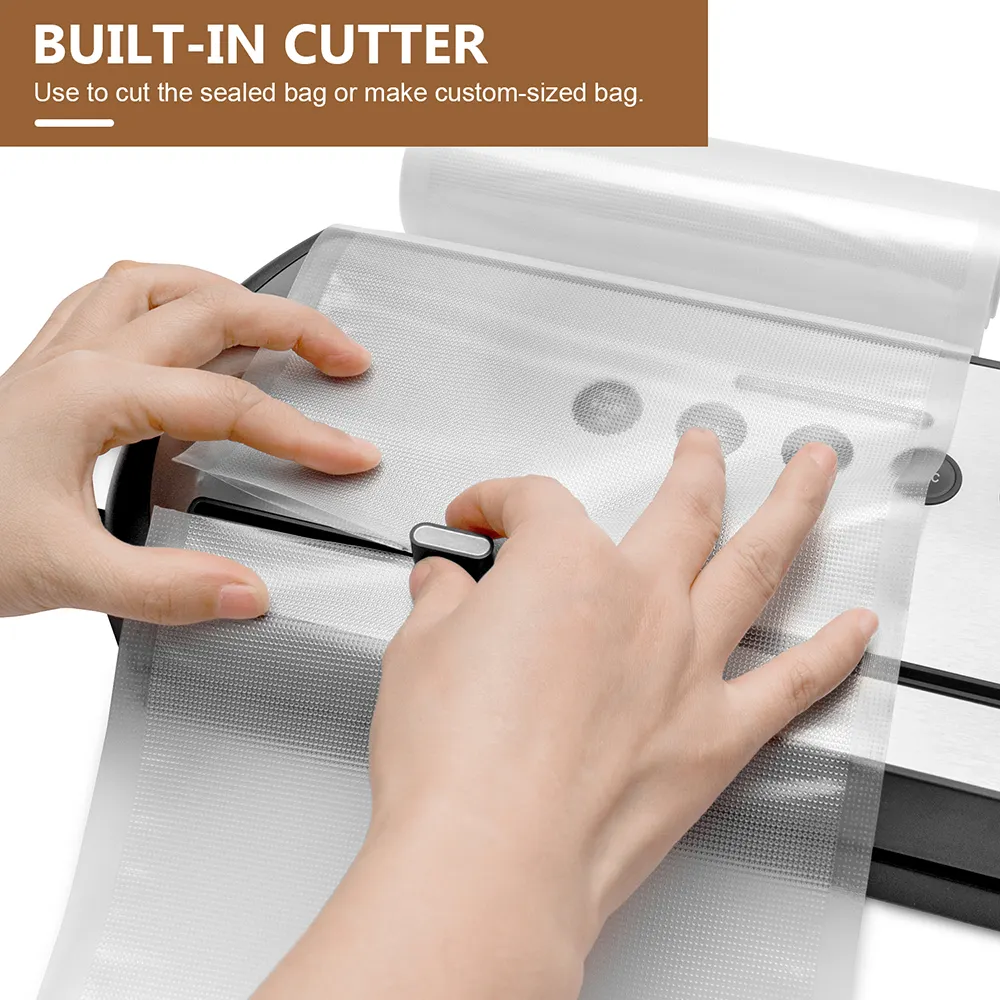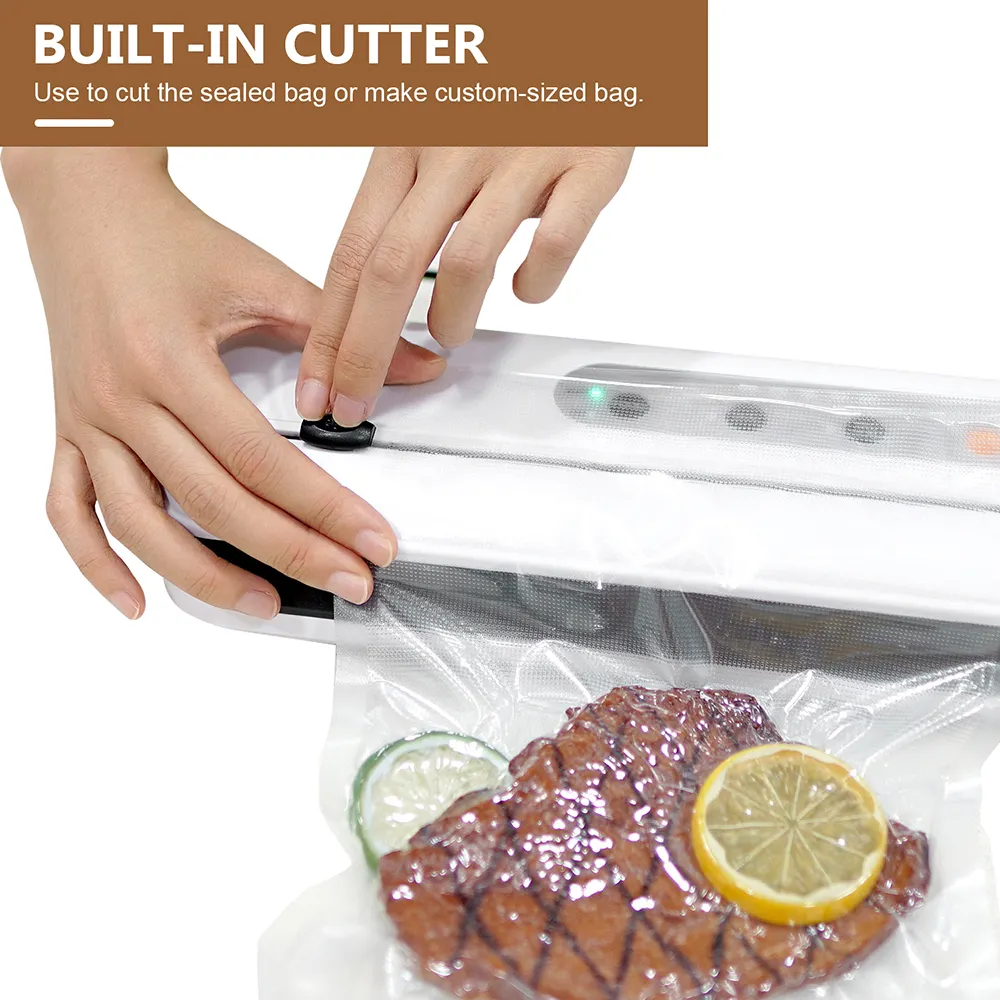In today's world of rising food costs and increasing awareness about food waste, protecting dry goods from spoilage has become more crucial than ever. A vacuum sealer machine represents a game-changing solution for both home users and businesses looking to extend the shelf life of their dry goods while maintaining optimal quality. This innovative technology removes air from storage containers and creates an impenetrable barrier against moisture and pests, effectively preserving everything from grains and nuts to coffee beans and dried fruits.
Modern vacuum sealer machines have revolutionized how we approach food storage and preservation. By creating an airless environment, these devices eliminate the primary catalysts for food deterioration – oxygen, moisture, and the conditions that attract unwanted pests. The result is significantly extended shelf life for dry goods, sometimes up to five times longer than conventional storage methods.
The vacuum sealer machine operates on a straightforward yet sophisticated principle. It extracts air from specially designed bags or containers, creating a near-perfect vacuum environment. This process eliminates oxygen, which is responsible for oxidation and the growth of aerobic bacteria. The machine then heat-seals the package, ensuring an airtight barrier that prevents external elements from compromising the contents.
When dealing with dry goods specifically, the vacuum sealing process becomes even more critical. Unlike moist foods, dry goods are particularly susceptible to humidity changes and pest infestations. The vacuum sealer machine creates an environment where these threats simply cannot exist, providing superior protection for your valuable food items.
The effectiveness of a vacuum sealer machine lies not just in its ability to remove air, but also in the quality of the seal it creates. Modern vacuum sealers use advanced heat-sealing technology that forms an unbreakable barrier against external elements. This seal is particularly important for dry goods, as even minimal exposure to moisture can lead to significant degradation.
The barrier created by the vacuum sealer machine also prevents the entry of common pantry pests such as weevils, moths, and beetles. These insects require oxygen to survive and cannot penetrate the airtight seal, making vacuum-sealed storage an excellent preventive measure against infestations.


When using a vacuum sealer machine for grains and legumes, proper preparation is essential. These items should be thoroughly dried and at room temperature before sealing. The vacuum sealer machine should be set to the appropriate pressure level to prevent crushing delicate items while ensuring a complete seal. For long-term storage, consider using oxygen absorbers in conjunction with vacuum sealing for maximum protection.
Different grains require slightly different approaches. For example, rice and quinoa can be sealed directly, while larger beans might benefit from flash-freezing before sealing to eliminate any potential insect eggs. The vacuum sealer machine's pressure settings can be adjusted accordingly to accommodate these variations.
Nuts and seeds contain natural oils that can go rancid when exposed to oxygen. A vacuum sealer machine effectively removes the air that would otherwise cause oxidation, significantly extending their shelf life. For optimal results, store sealed packages in a cool, dark place to further protect against degradation.
Dried fruits present unique challenges due to their sticky nature and residual moisture content. Using a vacuum sealer machine with adjustable sealing controls allows for customized packaging that prevents crushing while maintaining an effective seal. Some users find success by pre-freezing dried fruits before sealing to prevent moisture issues.
Modern vacuum sealer machines come equipped with intelligent sensors that detect optimal sealing points and automatically adjust pressure levels. These smart systems prevent over-compression of delicate items while ensuring maximum air removal. Some advanced models even feature humidity sensors that help determine the ideal sealing parameters for different types of dry goods.
The latest vacuum sealer machine technology includes programmable settings for different food types, making it easier to achieve consistent results. These presets take into account the texture, moisture content, and fragility of various dry goods, optimizing the sealing process for each specific item.
Contemporary vacuum sealer machines incorporate several safety features to protect both the user and the stored goods. Temperature monitoring systems prevent overheating during extended use, while pressure sensors ensure consistent sealing strength. Many models also include indicators that alert users when bags are improperly placed or when the seal isn't complete.
Advanced monitoring capabilities allow users to track the storage duration and conditions of their sealed items. Some vacuum sealer machines can even connect to smartphone apps, providing notifications about optimal storage times and potential seal compromises.
Investing in a vacuum sealer machine proves economically beneficial in multiple ways. By extending the shelf life of dry goods, it reduces food waste and allows for bulk purchasing at lower prices. The ability to buy larger quantities when prices are favorable and preserve them effectively can lead to significant savings over time.
The reduction in spoilage and waste also translates to fewer shopping trips and less frequent replacements of staple items. When properly sealed, dry goods maintain their quality for extended periods, eliminating the need for frequent replenishment and the associated costs.
Using a vacuum sealer machine aligns with sustainable living practices. By preventing food waste, these devices help reduce the environmental impact of food production and disposal. The reusable nature of vacuum sealer bags and containers further contributes to waste reduction compared to conventional single-use storage options.
The energy efficiency of modern vacuum sealer machines makes them an environmentally conscious choice for food preservation. Their targeted operation requires minimal power while providing maximum benefit in terms of food preservation and waste prevention.
When properly sealed and stored in appropriate conditions, dry goods can last significantly longer than conventional storage methods. Grains and legumes can maintain quality for 2-3 years, while nuts and seeds can stay fresh for up to 2 years. The exact duration depends on initial food quality, storage conditions, and seal integrity.
While vacuum sealing creates an environment where pests cannot survive, it's essential to ensure foods are pest-free before sealing. The vacuum sealer machine creates an oxygen-free environment that prevents pest development, but any existing eggs or insects should be eliminated through freezing or other methods before sealing.
Look for adjustable pressure settings, reliable heat sealing capabilities, and compatibility with various bag sizes. Additional features like automatic moisture detection, customizable programs for different food types, and durable construction are also valuable for long-term use. Consider models with clear indicator lights and easy-to-use controls for convenient operation.